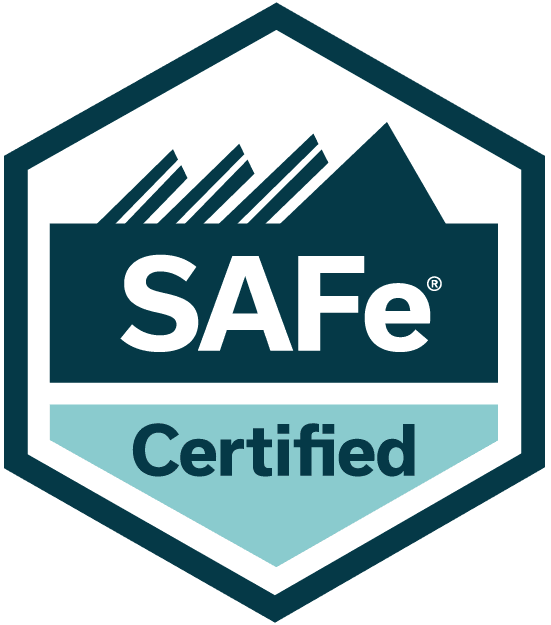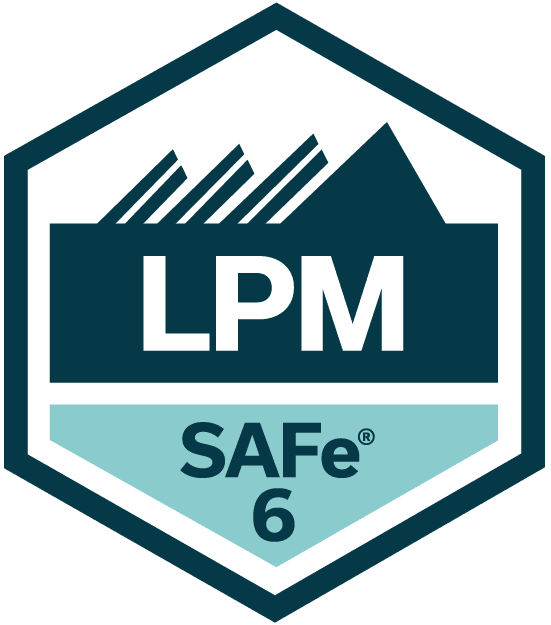Why SAFe DevOps Certification Is a Must-Have for Agile Professionals
SAFe Accreditation: Your Gateway to Scaled Agile Proficiency
The SAFe Certification has actually emerged as an important property for specialists intending to excel in the world of Scaled Agile methods. By seeking this accreditation, people not just confirm their competence yet also position themselves as crucial gamers in driving Dexterous transformations throughout diverse organizations.

Recognizing SAFe Structure
Recognizing the expanding complexity of modern ventures, the Scaled Agile Framework (SAFe) provides a structured technique to implementing Nimble methods at scale. This framework is designed to address the challenges connected with working with several Agile groups while guaranteeing alignment with strategic business purposes. SAFe incorporates concepts from Agile, Lean, and item advancement flow, developing an extensive version that fosters cooperation and efficiency.
At the Group degree, Agile teams concentrate on providing worth via repetitive growth. At the Huge Option level, SAFe addresses complicated remedies that need sychronisation across several ARTs, while the Portfolio degree aligns strategy with implementation, offering guidance on financing and financial investment.
SAFe highlights continuous renovation and learning, urging companies to embrace a mindset of versatility and development. Through its organized yet versatile strategy, the SAFe structure equips ventures to navigate the complexities of contemporary job monitoring, ultimately improving their capability to provide worth in a timely and efficient manner.
Benefits of SAFe Accreditation
Accomplishing SAFe certification provides numerous advantages for specialists and companies alike. For people, acquiring this qualification enhances their bankability and demonstrates a dedication to grasping the Scaled Agile Framework. It gears up professionals with vital abilities and expertise to lead Active transformations successfully, making them very useful assets to their organizations.
For companies, having accredited employees cultivates a culture of continual improvement and advancement (SAFe Lean Portfolio Management). It guarantees that groups are lined up and furnished to carry out Nimble practices at range, ultimately driving performance and efficiency. Licensed professionals are much more likely to improve interaction and collaboration throughout groups, leading to enhanced project end results and quicker time-to-market.

Additionally, qualification opens possibilities for connecting with various other Agile professionals, permitting people to share insights and experiences that can additionally enhance their capacities. Eventually, the advantages of SAFe qualification add to a more agile company, better prepared to react to the obstacles of an ever-evolving market landscape.
Certification Refine Review
To start the journey towards SAFe accreditation, prospects have to first familiarize themselves with the different qualification degrees and linked training programs offered by Scaled Agile, Inc. These qualifications range from the SAFe Agilist (SA) to sophisticated accreditations such as the SAFe Program Specialist (copyright) Each accreditation requires particular training, which should be completed prior to candidates can sit for the evaluation.
The process begins with choosing the appropriate training course that straightens with the wanted certification. Scaled Agile provides a variety of in-person and online programs facilitated by qualified trainers. Upon conclusion of the program, candidates obtain access to the equivalent exam, normally provided online.
Exams consist of multiple-choice questions made to assess a prospect's understanding of the SAFe framework, concepts, and review methods. A passing score is needed to make accreditation, and candidates may take back the examination if they do not pass on their first effort.
Once accredited, people must keep their certification via continuing education and engagement in SAFe-related activities, guaranteeing they stay present with advancing structures and techniques. This commitment to ongoing understanding is essential for professionals intending to accomplish proficiency in scaled dexterous techniques.
Occupation Opportunities With SAFE
Checking out occupation possibilities with SAFe can open a large range of paths in the dexterous and task management landscape. As organizations significantly embrace the Scaled Agile Structure (SAFe) to boost collaboration and effectiveness, specialists with SAFe qualification remain in high demand. Roles such as SAFe Program Consultant, Launch Train Designer, and Agile Coach are crucial in directing teams with the intricacies of nimble change.
Licensed specialists can additionally locate possibilities as Item Owners, Scrum Masters, or in management positions such as Profile Supervisor. These duties not only require knowledge in dexterous techniques yet likewise a deep understanding of SAFe concepts to align teams and deliver value at scale. Additionally, industries ranging from IT to medical care and finance are proactively looking for SAFe-trained people to spearhead active initiatives, making this qualification a useful property.
In addition, the growth view of remote work has increased the job market, enabling SAFe experts to collaborate with varied groups across geographical limits. SAFe For Architects. By obtaining SAFe accreditation, individuals position themselves as principals in fostering dexterous techniques, ultimately enhancing their occupation trajectory and job fulfillment in an affordable landscape
Tips for Effective Certification
Getting ready for SAFe certification needs a critical method to make sure success. Familiarize yourself with the SAFe structure by extensively reviewing the official SAFe web site and relevant literature. The Scaled Agile Structure is considerable, so recognizing its core methods, principles, and functions is important.
2nd, take into consideration enlisting in a reputable SAFe training program, ideally led by a licensed SAFe trainer. These training courses give organized knowing and valuable insights that can dramatically enhance your understanding of the structure.
Third, exercise with simulated examinations to assess your knowledge and recognize areas for improvement. Numerous sources are offered online, offering example questions that mirror the layout of the real exam.
Furthermore, developing a research my blog group with fellow candidates can be beneficial. Collective understanding fosters conversation and strengthens understanding of complicated principles.
Conclusion

Acknowledging the growing complexity of modern ventures, the Scaled Agile Structure (SAFe) supplies an organized approach to implementing Active techniques at range. These qualifications vary from the SAFe Agilist (SA) to innovative certifications such as the SAFe Program Consultant (copyright) As companies significantly embrace the Scaled Agile Structure (SAFe) to boost collaboration and effectiveness, specialists with SAFe qualification are in high demand. Duties such as SAFe Program Specialist, Launch Train Engineer, and Agile Train are pivotal in directing teams via the intricacies of agile transformation.
Familiarize on your own with the SAFe framework by extensively reviewing the official SAFe site and pertinent literature.